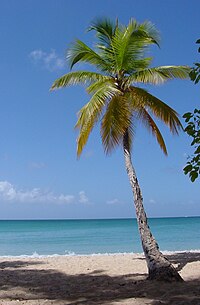
Photo from wikipedia
Polygonaceae has a complex taxonomic history, although a few studies using plastid or nuclear DNA fragments have explored relationships within this family, intrafamilial relationships remain controversial. Here, we newly sequenced… Click to show full abstract
Polygonaceae has a complex taxonomic history, although a few studies using plastid or nuclear DNA fragments have explored relationships within this family, intrafamilial relationships remain controversial. Here, we newly sequenced and annotated 17 plastomes representing 12 genera within Polygonaceae. Combined with previously published data, a total of 49 plastomes representing 22/46 Polygonaceae genera and 16/20 Polygonoideae genera were collected to infer the phylogeny of Polygonaceae, with an emphasis on Polygonoideae. Plastome comparisons revealed high conservation within Polygonoideae in structure and gene order. Phylogenetic analyses using both Maximum Likelihood and Bayesian methods revealed two major clades and seven tribes within Polygonoideae. BEAST and S-DIVA analyses suggested a Paleocene origin of Polygonoideae in Asia. While most genera of Polygonoideae originated and further diversified in Asia, a few genera experienced multiple long-distance dispersal events from Eurasia to North America after the Miocene, with a few dispersal events to the Southern Hemisphere also being detected. Both ancient vicariance and long-distance events have played important roles in shaping the current distribution pattern of Polygonoideae.
Journal Title: Frontiers in Plant Science
Year Published: 2022
Link to full text (if available)
Share on Social Media: Sign Up to like & get
recommendations!